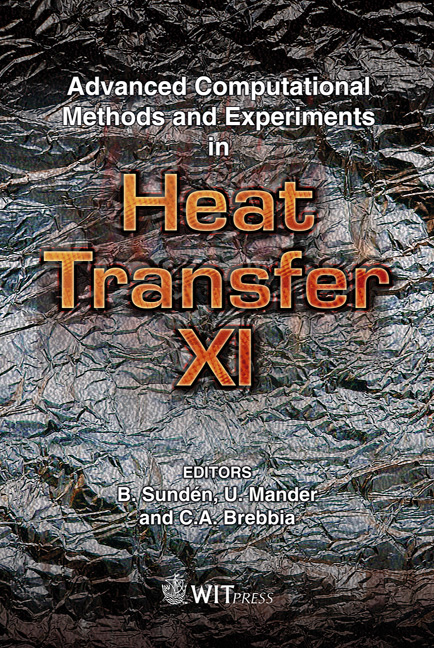Film Dynamics Relevant To Spray Cooling
Price
Free (open access)
Transaction
Volume
68
Pages
12
Page Range
313 - 324
Published
2010
Size
1,925 kb
Paper DOI
10.2495/HT100271
Copyright
WIT Press
Author(s)
E. Gehring, G. Soriano, Y. P. Lin, J. L. Alvarado & M. F. Trujillo
Abstract
For a number of years spray cooling has shown to be a viable alternative for thermal management of high-density electronics. Nevertheless, the key fundamental physical processes are to a large degree poorly understood due mostly to the complicated fluid dynamics resulting from nucleate boiling coupled with spray drop impingement. In this combined experimental and modeling effort, a representative configuration consisting of a liquid film resting on a solid silicon-based substrate with an imposed constant heat flux and an impinging train of droplets has been studied. This configuration mimics to a great degree the physics of spray cooling, while simultaneously simplifying the experimental and computational analysis to a manageable level. It is shown that a number of statistically quasi-stationary states are possible by carefully coordinating the heat flux and drop impingement rates. Studies were both performed for water and FC-72. Due in part to its lower surface tension, the quasi-stationary states for FC-72 were instantaneously much more chaotic than the corresponding water cases. The OpenFoam (open source computational fluid dynamics) code has been supplemented with an energy equation within the existing Volume-of-Fluid infrastructure. This was used to analyze the dynamics in the impingement region. It is shown that the temperature in this region is approximately equal to the temperature of incident droplets. For all water and FC-72 films, it was found that each droplet impact penetrated the entire thickness of the film bringing a significant cooling effect on the heated substrate. This was the case even for film thickness-to-impact droplet diameter ratios far exceeding one. Keywords: spray cooling, drop impingement, heat transfer enhancement, twophase flow.
Keywords
spray cooling, drop impingement, heat transfer enhancement, twophase flow





